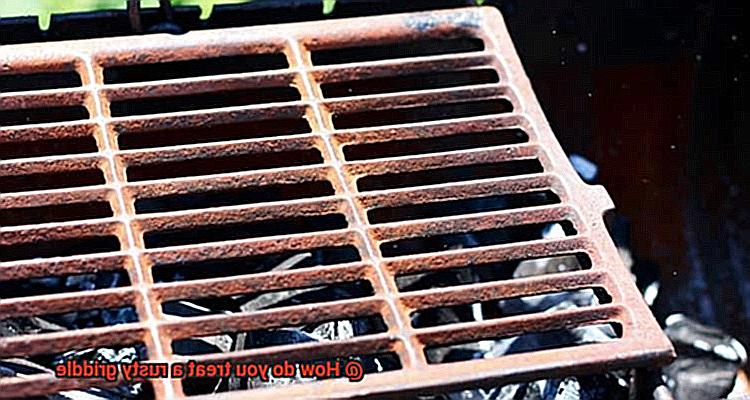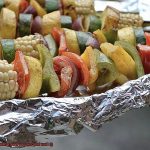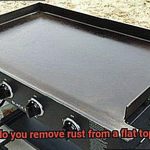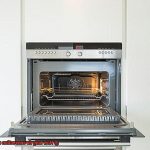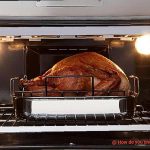Do you dread cooking on a rusty griddle? The sight of rust on what was once a shiny surface can be disheartening. It’s not just the unpleasant taste that ruins your food, but also the health risks. Rust contaminates your griddle and promotes harmful bacteria growth, leading to food poisoning. The mere thought of it is enough to make anyone shudder.
But before you toss out your rust-covered griddle and start browsing for a new one, know that there’s still hope for your cookware. With the right treatment, you can restore your griddle and bring it back to life.
In this blog post, we’ll dive into effective ways to treat a rusty griddle. From using vinegar and baking soda to specialty rust remover products, we’ve got all the solutions covered. We’ll also share tips on preventing your griddle from rusting in the first place and maintaining its top condition. So roll up your sleeves, put on your apron, grab that rusty griddle, and let’s get started.
Contents [show]
Step 1: Thoroughly Clean the Griddle
The first step in the process is crucial – thoroughly cleaning the griddle. Here’s how to do it like a pro:
- Remove loose debris: Start by using a wire brush or scraper to eliminate any loose rust or debris from the surface of the griddle. Make sure to wear gloves and eye protection for safety.
- Scrub with hot soapy water: Next, use hot water and dish soap to scrub the griddle surface with a non-abrasive scrubber or sponge. Ensure that you rinse the griddle thoroughly with hot water and dry it completely with a clean towel. A clean surface is essential before proceeding to the next step.
- Use a rust remover: If there are stubborn rust spots that cannot be removed with soap and water, try using a rust remover product specifically designed for griddles. Follow the instructions on the product carefully and use protective gear as recommended.
- Season the griddle: After removing all dirt, grease, and rust residue from the surface, it’s crucial to season it before use. The seasoning process involves heating the griddle surface and applying a thin layer of oil to protect it from rusting in the future.
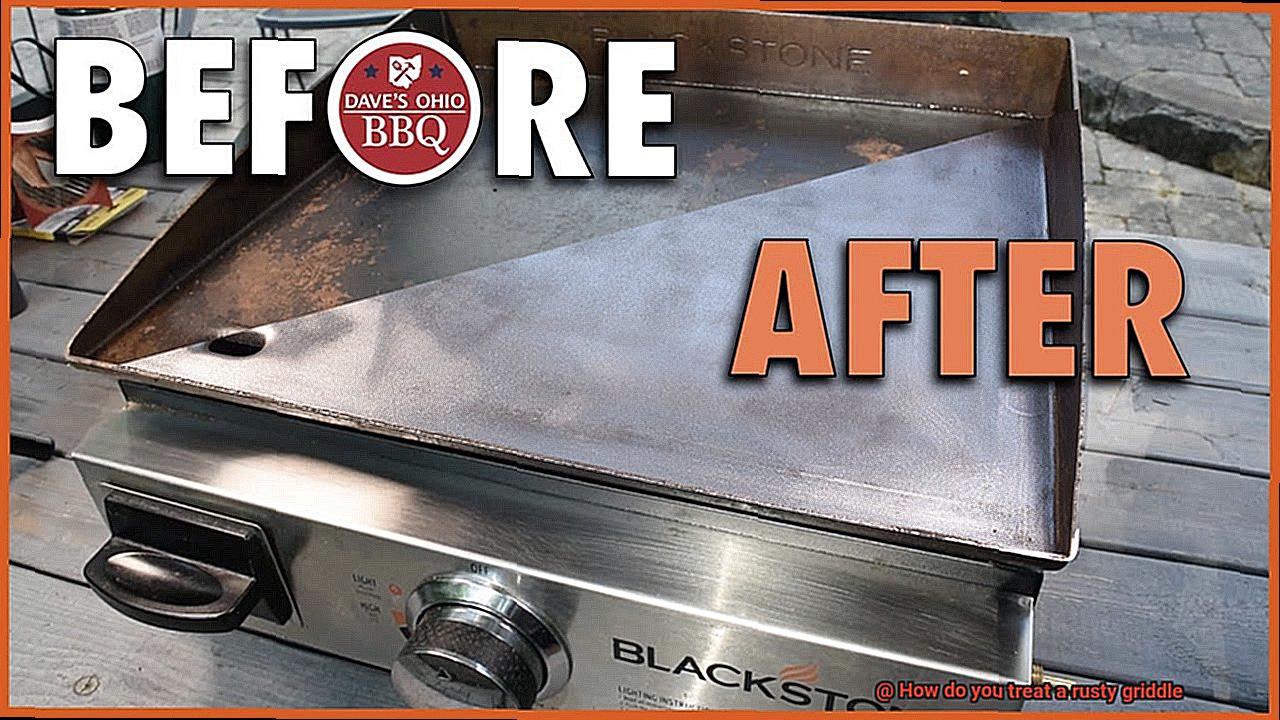
Step 2: Treat Light Rust with a Baking Soda Paste
It’s time to treat that light rust with a baking soda paste. This is where things start to get exciting.
Why is baking soda such an effective solution? First of all, it’s a natural abrasive that won’t damage the surface of your griddle. Plus, it’s super easy to make the paste. All you need are equal parts of baking soda and water. Mix them together until you get a thick consistency, and you’re good to go.
Now, it’s time to apply that paste. Use a soft-bristled brush or cloth to apply the paste to all rusted areas on your griddle. Make sure to cover all surfaces with rust spots, and don’t be afraid to be generous with the paste.
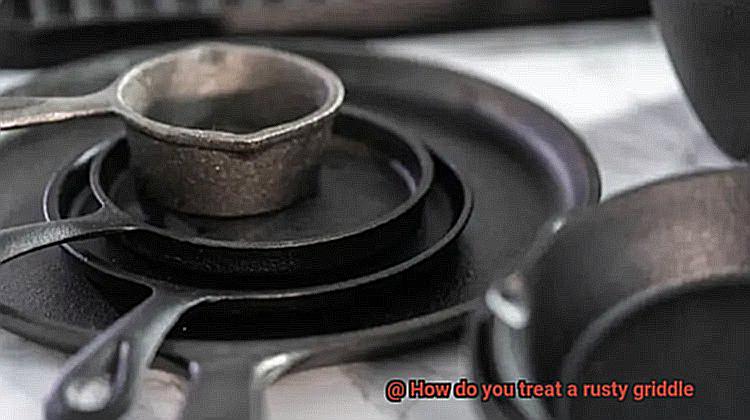
Once you’ve applied the paste, give it some time to work its magic. Let it sit on the rusted areas for at least 30 minutes. During this time, the baking soda will break down and loosen the rust.
After 30 minutes, it’s time to scrub away that rust. Use your brush or cloth to scrub the rusted areas gently. Don’t apply too much pressure or over-scrub as this can damage your griddle’s surface.
Rinse off your griddle with water and dry it thoroughly with a clean towel. If there are still some stubborn rust spots remaining, don’t worry. You can repeat the process until they’re completely removed.
To recap: equal parts baking soda and water make a natural paste; apply generously with a soft-bristled brush or cloth; let sit for 30 minutes; scrub gently; rinse and dry with a clean towel; repeat if necessary.
Step 3: Treat Severe Rust with a Commercial Rust Remover
In the previous section, we discussed using baking soda to remove rust from your griddle. However, if the rust is severe and baking soda isn’t effective, a commercial rust remover is the solution.
Using a commercial rust remover may sound daunting, but with our guidance, you’ll be a pro in no time. Let’s go through the steps of using a commercial rust remover to treat severe rust on your griddle.
Firstly, ensure that you read the instructions on the rust remover carefully and wear gloves and protective eyewear for safety. Next, give your griddle a thorough clean with soap and water and make sure it’s completely dry before moving on.
Apply a generous layer of the rust remover onto the rusty areas of your griddle and allow it to sit for the recommended time on the package, usually between 30 minutes to an hour. It’s time to sit back and relax while the rust remover does its job.
Once the recommended time has passed, it’s time to scrub away the rust with a scrub brush or steel wool in circular motions until all the rust has been removed. Rinse your griddle with water and dry it completely with a clean cloth. It’s crucial to remove all traces of the rust remover from the griddle as it can affect the taste and quality of your food.
Congratulations. Your griddle should now be free of severe rust and ready for seasoning. Proper seasoning will protect your griddle from future rust and make it non-stick for cooking. In our next section, we’ll cover how to season your griddle correctly.
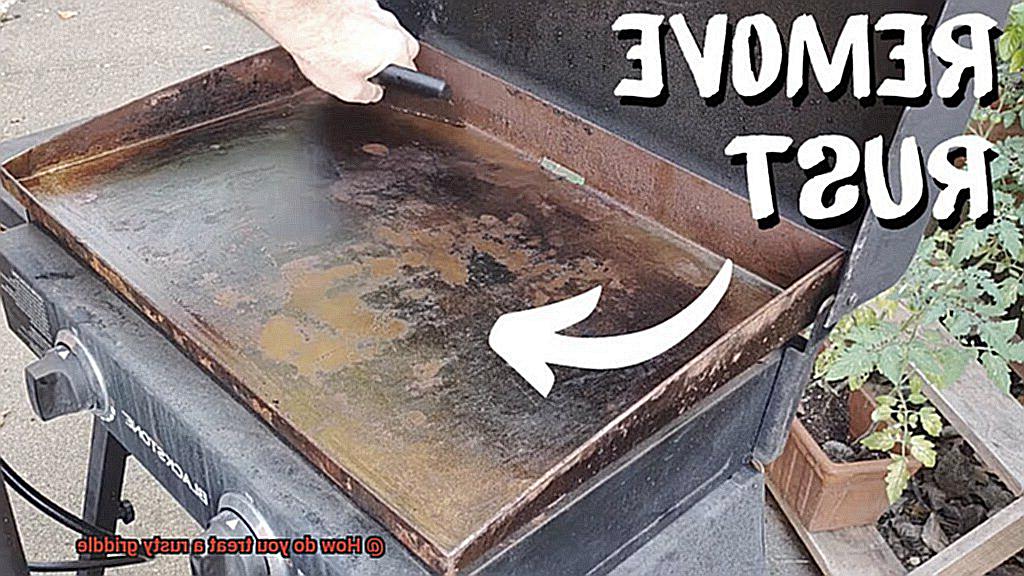
Step 4: Treat Rust with Vinegar
The solution to your problem might be sitting right in your kitchen pantry. Vinegar, with its acetic acid content, can be an affordable and effective solution for treating rust on your griddle.
To begin, mix equal parts of white vinegar and water in a spray bottle. Generously spray the mixture over the rusted areas of the griddle and let it sit for approximately 30 minutes. During this time, the acid in the vinegar will go to work breaking down the rust.
After 30 minutes have elapsed, grab a scrub brush or steel wool and start scrubbing away at the rust. For tougher rust stains, additional vinegar mixture may be necessary. Once you’ve removed as much rust as possible, rinse the griddle with water and dry it thoroughly.
It is crucial to note that vinegar is an acid and may damage certain types of griddles such as those made of cast iron. To avoid any potential damage, consult the manufacturer’s instructions or seek advice from a professional if you’re unsure about using vinegar on your griddle.
Overall, treating rust with vinegar is a simple and cost-effective method for restoring your griddle’s former glory. Here are some tips to keep in mind when using vinegar as a rust treatment:
- Mix equal parts of white vinegar and water in a spray bottle
- Let the mixture sit on the rust for about 30 minutes
- Use a scrub brush or steel wool to remove the rust
- Rinse the griddle with water and dry it thoroughly
- Take precautions when using vinegar on certain types of griddles
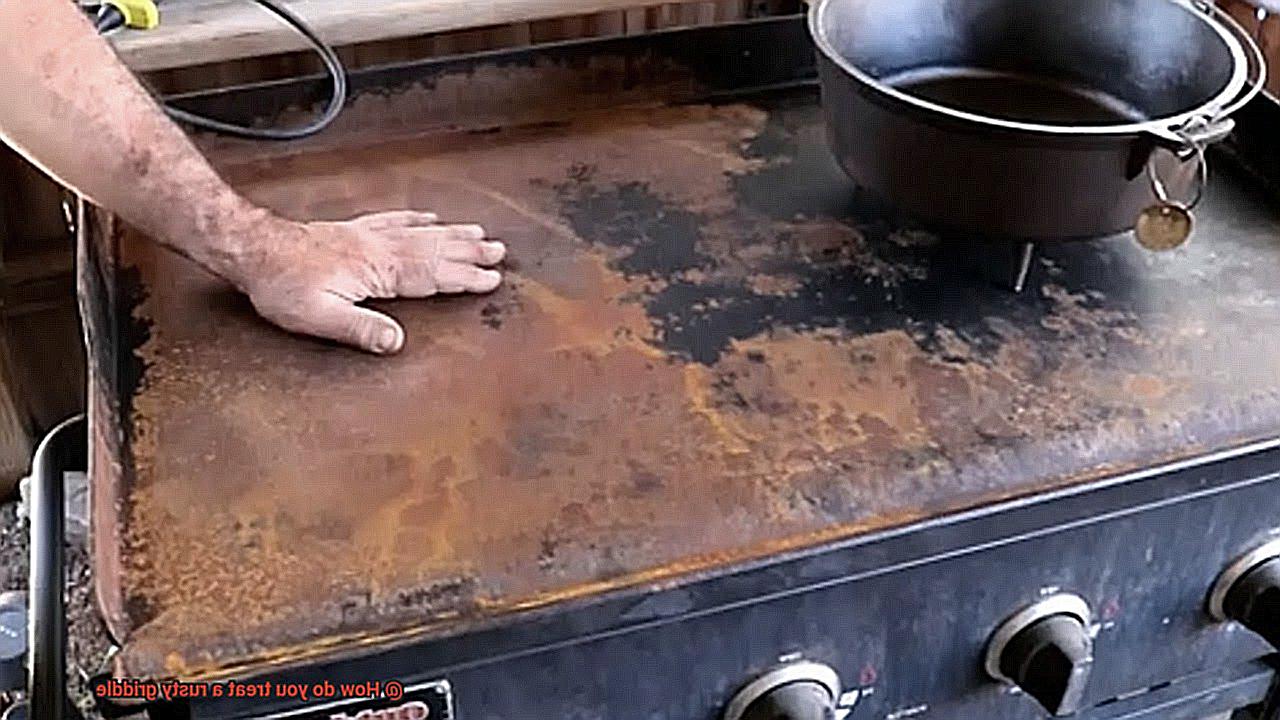
Step 5: Season the Griddle to Prevent Further Rusting
Seasoned griddles are the secret to preventing further rusting and protecting your griddle from acidic foods. As an expert in reviving rusty griddles, let me guide you through step 5: How to season your griddle like a pro.
To start, make sure your griddle is clean and free of any rust or debris by following the vinegar treatment outlined in step Once it’s clean and dry, it’s time to season.
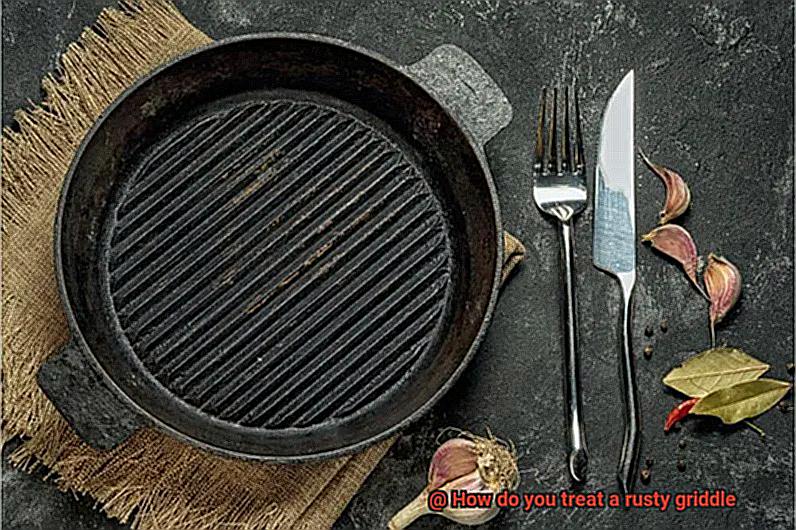
Grab your favorite cooking oil, whether it be vegetable or canola oil, and apply a thin layer all over the surface of your griddle. You can use a paper towel or cloth to do this. The oil will create a non-stick surface that will protect your griddle from acidic foods that can cause damage.
Next, heat up your griddle on high for about 10-15 minutes until the oil begins to smoke and the griddle turns black. This means that the oil has bonded with the surface, creating a non-stick layer that will keep your food from sticking and prevent further rusting. The sizzling sound of the oil bonding with the surface is music to any cook’s ears.
Once you’ve heated up the griddle, let it cool down before wiping away any excess oil with a clean cloth. It’s important to note that you may need to repeat this process several times, especially if your griddle is heavily rusted. A little bit of patience goes a long way towards achieving a perfectly seasoned griddle.
After each use, make sure to clean your griddle with a scraper and hot water before applying a thin layer of oil and storing it in a dry place. By seasoning your griddle regularly, you can ensure that it stays in top condition for years of enjoyable grilling.
Benefits of Treating a Rusty Griddle
As a grill master, nothing is more frustrating than a rusty griddle. But don’t let that rust get you down. Treating a rusty griddle is not only easy but also comes with a plethora of benefits.
First and foremost, treating a rusty griddle can add years to its life span. Rust eats away at metal, causing it to break down over time. By treating the rust, you can prevent further damage and ensure your griddle lasts for years to come.
But there’s more. Treating a rusty griddle also improves the quality of your food. Rust can alter the flavor of food and even pose health risks. Removing the rust ensures that your food is cooked on a clean surface and tastes its best.
What’s more, treating a rusty griddle maintains its appearance. A rusty griddle can be an unsightly eyesore that makes your grill area look unkempt. By treating the rust, you can restore the griddle’s appearance and make your grill area look more attractive.
And if all these benefits aren’t enough to convince you, consider this: treating a rusty griddle can save you money in the long run. Neglecting a rusty griddle can lead to extensive damage that requires costly replacements. Treating the rust early on can prevent this from happening and save you from purchasing a new griddle.
Tips for Keeping Your Griddle in Good Condition
Here are some tips that will help you maintain your griddle and ensure that it performs at its best:
Clean your griddle after each use
This is the most important step in maintaining your griddle. After using your griddle, scrape off any excess food or grease with a scraper or spatula. Then, wipe it down with a damp cloth or paper towel. If your griddle has a lot of grease buildup, use a cleaning solution specifically designed for griddles. A clean griddle not only looks better but cooks better too.
Season your griddle
Seasoning is an essential step in keeping your griddle in good condition. Seasoning means coating the surface of the griddle with oil to prevent rust and keep food from sticking. To season your griddle, apply a thin coat of oil over the surface and then heat it up until the oil starts to smoke. Let it cool down and repeat the process until the surface is evenly coated. Proper seasoning also helps to improve the non-stick properties of your griddle.
Store your griddle properly
When not in use, store your griddle in a dry and cool place. You can cover it with a cloth or plastic wrap to prevent dust and debris from getting onto the surface. Ensure that the location you store it is away from any moisture or humidity that could cause rust.
Avoid using metal utensils
Metal utensils can scratch the surface of your griddle, which can lead to rust and corrosion over time. Use wooden or plastic utensils instead. These are less likely to cause any damage to your griddle’s surface.
Protect your griddle from moisture
Moisture is one of the biggest culprits when it comes to rust formation on griddles. Make sure to dry your griddle thoroughly after each use and cover it with a high-quality cover when not in use. A cover will protect your griddle from the elements, including rain, snow, and humidity.
eTD7uxk6jTY” >
Conclusion
In conclusion, a rusty griddle can be a cook’s worst nightmare. Not only can it ruin the taste of your food, but it can also pose health risks due to bacteria growth. Fortunately, you don’t have to toss out your rusty griddle just yet. With the right treatment, you can restore it and make it as good as new.
To treat a rusty griddle, start by giving it a thorough cleaning with soap and water or a rust remover product if necessary. For light rust, whip up a paste of baking soda and water for an effective solution. For more severe rust, opt for a commercial rust remover. Vinegar is also an affordable and natural alternative for treating rust on your griddle.
Once you’ve removed the rust, seasoning your griddle is essential to prevent further corrosion and protect it from acidic foods that can cause damage. Proper maintenance after each use will also help keep your griddle in top condition for years to come.
By treating your rusty griddle, not only will you improve the quality of your food but also add years to its lifespan and save money in the long run. Follow these tips for maintaining your griddle’s optimal condition: clean after each use, season regularly, store properly, avoid metal utensils, and protect from moisture.

